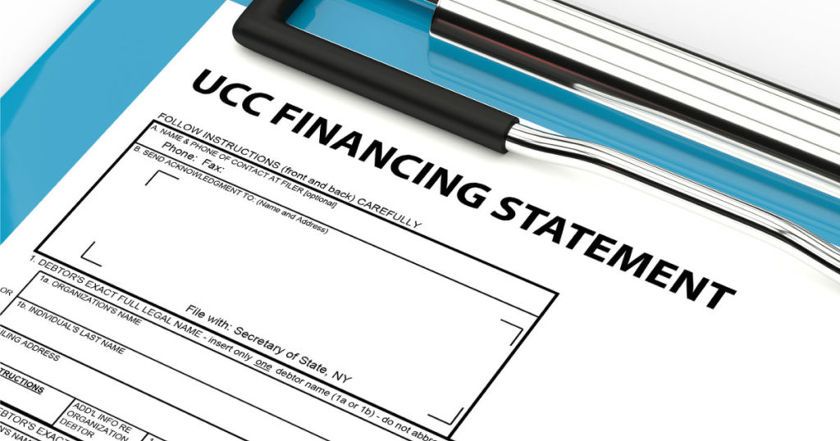A UCC filing is what a creditor files in attempt to place a lien on the collateral of a debtor in default. These type of filings are filed with the Secretary of State and for the purpose of expressing interest in your collateral assets. UCC is an acronymn that stands for uniform commercial code.
These filings are complex and the secured interest of a UCC filing can be not so secure if filed incorrectly. It is in the best interest of the creditor to have a clear understanding of UCC filings to properly secure loan collateral.
When filied incorrectly, a debtor can use it to their advantage when a UCC is filed against them. If you currently have a UCC filed against you, contact us for a free consultation. In many cases, we are able to help in such situations, negotiating a resolution that is manageable and protects your assets.
How to Remove a UCC-1 Filing
Your lender should file a UCC-3 filing once your debt has been paid in full. This would remove the UCC-1 filing. If they fail to do so, you can request the removal of the UCC-1 yourself through your Secretary of State’s office. To dispute the filing is pretty simple. You will be asked under oath if you have paid the debt in full.

How a Uniform Commercial Code Filing Affects Your Credit
Although, the UCC filing doesn’t have a negative impact on your credit, it does still show on your report. Since UCC filings are a necessary aspect of securing more affordable funding, they are not viewed negatively. They can, however, make it harder to qualify for additional funding in the future. This is why, once a debt has been paid in full that is attached to a UCC filing, it’s good practice to make certain it’s been removed.
If you find that it has not been removed, follow the procedures involved with requesting the removal yourself. Other than making a trip to your Secretary of State’s office, it’s pretty simple to get removed.
Bankruptcy For Business Debt – Options and Filing
The need to file bankruptcy for business debt may seem unavoidable. However, a business filing bankruptcy is not always the best choice compared to other options. Options that can help turn your business around without the headache that comes with bankruptcy. Before...
Business Funders | List of Merchant Cash Advance Lenders
See a complete list of business funders that make business funding loans to businesses large and small. If you have found yourself overstacked with merchant loans, you can get a quote on restructuring your existing mca loans. A legal restructured term can dramatically...
Business Debt Settlement – Eliminate MCA Debt Without an Attorney
MCA Relief | Get Relief From Merchant Loans
Debt to income is a huge factor in determining a business's financial health. Daily payments become burdensome to businesses experiencing a downturn in revenue. Payments continue to be drafted even when the cash-flow drops. MCA relief is very real need for businesses...
MCA Restructuring | Lower Merchant Loan Payments
Debt to income is a huge factor in determining a business's financial health. Daily payments become burdensome to businesses experiencing a downturn in revenue. Payments continue to be drafted even when the cash-flow drops. MCA restructuring is very real need for...
Business Debt Help Options | Learn More
There is no shortage of options and programs designed to give relief from business debt. So, what are some of the main business debt help options, and how do you decide which is most fitting for your situation? There first step is to know what options are available....
What is a Confession of Judgment?
A confession of judgment is clause often hidden within a contract for a business loan or commercial lease. COJ clauses are common in alternative funding contracts such as merchant cash advances. By signing a confession of Judgment, you are signing away your right to...
Reverse MCA Consolidation Loan | What is it?
Business Debt Negotiation | When to Consider
Being overextended with debt is stressful. It is on your mind from the moment you wake up till the moment you fall asleep. It's an even more miserable feeling especially when you aren't sure how to resolve it or you think bankruptcy is your only option. Business debt...
Business Bankruptcy Alternatives
There are times when filing for bankruptcy is unavoidable. But, more times than not, there are alternative options more suitable for dealing with debt. Options that can help turn your business around without the headache that comes with bankruptcy. Some of these...
Business Debt Restructuring | Options and More
Debt to income is a huge factor in determining a business's financial health. Daily payments become burdensome to businesses experiencing a downturn in revenue. Payments continue to be drafted even when the cash-flow drops. Business debt restructuring is very real...
Consolidate MCA Loans Fast and Effectively
Merchant cash advances provide the needed cash for businesses in need of working capital. Qualify for this type of small business cash advance is easy, making them an attractive option for quick funding. Your daily payments are made from a percentage of your credit...
Business Debt Relief | Program Options and How They Work
It's not uncommon for businesses small and large to find themselves in need of debt relief. A relief program is designed to address this need by negotiating a settlement and restructuring the business's debt accordingly. When a business owner begins struggling to make...
MCA Debt Relief | Get Help Now
MCA debt is a huge factor in determining the financial health of a business. Daily payments become burdensome to businesses experiencing a downturn in sales. The daily payments continue even when cash-flow drops. This is why the need for MCA debt relief is very real....














